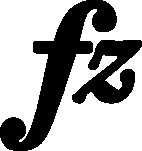



|
b. 297-299
|
composition: Op. 21, Concerto in F minor, Mvt III
..
The absence of the accents in bars 297 and 299 in GE1 (→FE) may be considered to be a result of the inaccuracy of the engraver or of Chopin's proofreading – see bars 293-295. The accent of EE in bar 297 is a revision performed after analogous bars 293 and 295 or a mistake. The signs in GE2 were added on the basis of A. category imprint: Differences between sources issues: EE revisions , GE revisions , Authentic corrections of GE |
|||||||||||
|
b. 297
|
composition: Op. 21, Concerto in F minor, Mvt III
..
The absence of the category imprint: Differences between sources issues: EE revisions , Scope of dynamic hairpins , GE revisions , Authentic corrections of GE |
|||||||||||
|
b. 297-299
|
composition: Op. 11, Concerto in E minor, Mvt III
..
In FE (→GE1→GE2), all octaves in the L.H. in bar 297 and the first two in bar 299 are written in an abbreviated manner (top notes with 8s under them). According to us, one of those digits – the last in bar 297 – was perhaps left by mistake, which is indicated by a comparison with analogous bar 69. However, we do not suggest that version here, since the entire Tutti shows numerous minor differences between the first and second time, whereas the aforementioned quaver is provided with a category imprint: Differences between sources issues: EE revisions , GE revisions , Abbreviated octaves' notation |
|||||||||||
|
b. 297
|
composition: Op. 11, Concerto in E minor, Mvt III
..
The dots added in GE3 under the octaves in the L.H. in the 2nd half of the bar are an arbitrary revision of the editor. category imprint: Differences between sources issues: GE revisions |
|||||||||||
|
b. 297-298
|
composition: Op. 2, Variations, complete
..
The ending of the slur of A reaching f3 was most probably added later, replacing the previous markings, analogous to the two preceding figures (staccato dot and slur to the last semiquaver in bar 297). It is unclear why this distinct notation was not reproduced by GE (→FE,EE). Perhaps it was influenced by the layout, in which bar 298 opens a new line. Chopin's intervention seems highly unlikely here. category imprint: Differences between sources; Corrections & alterations; Source & stylistic information issues: Corrections in A , GE revisions |





 in
in 

 mark in bar 297, which may be considered a justification of the sound enhanced with an octave.
mark in bar 297, which may be considered a justification of the sound enhanced with an octave.